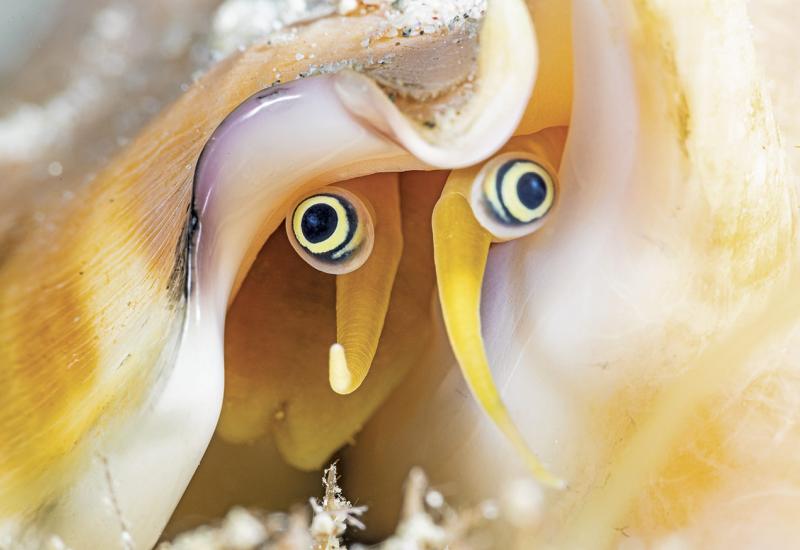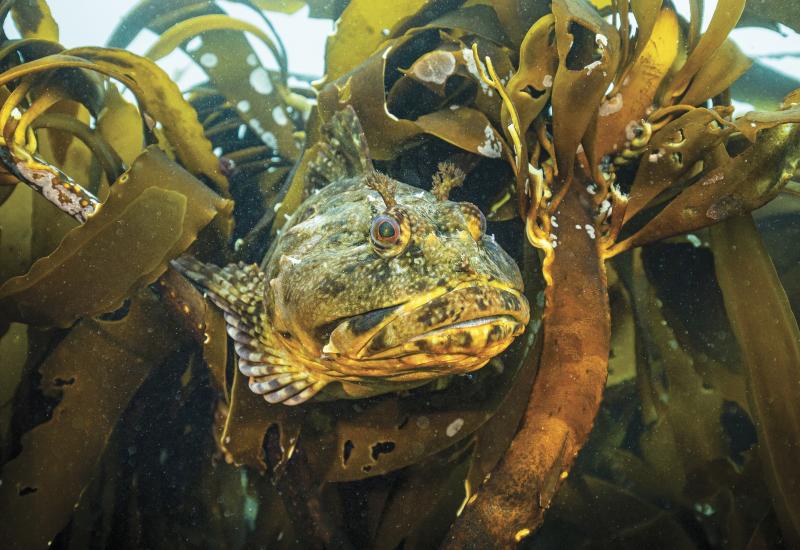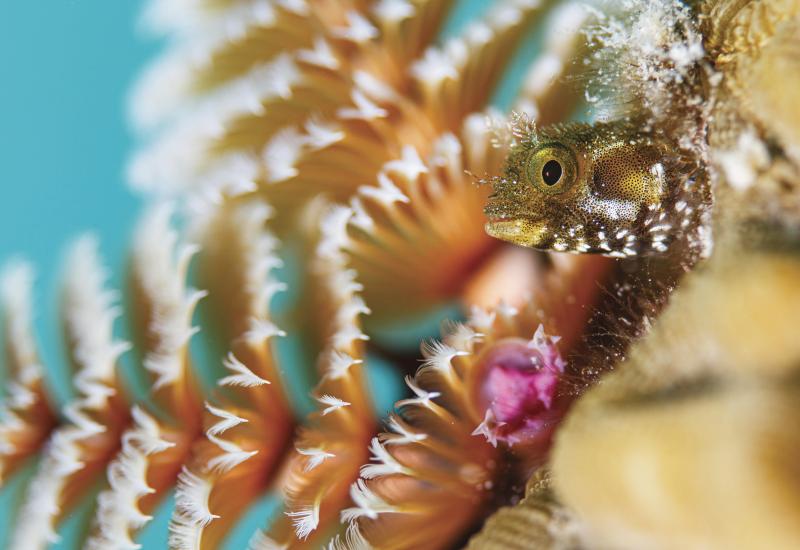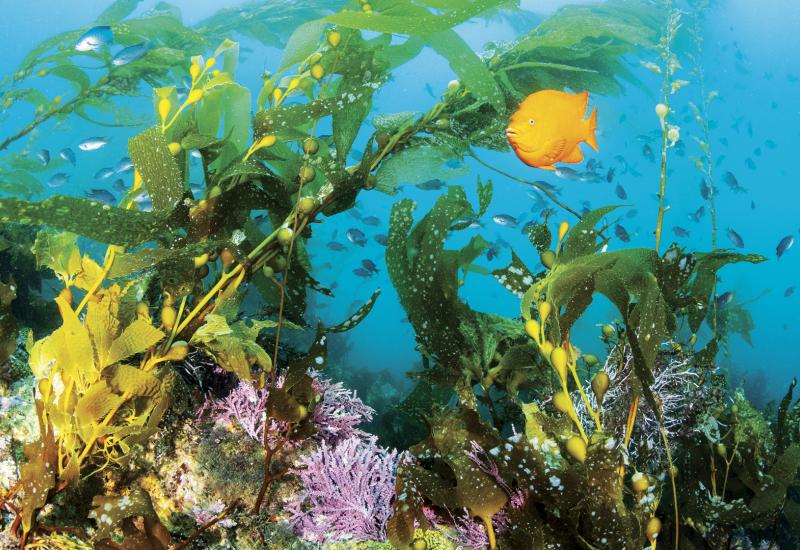How To Use the Close-Focus Wide-Angle Underwater Photography Technique
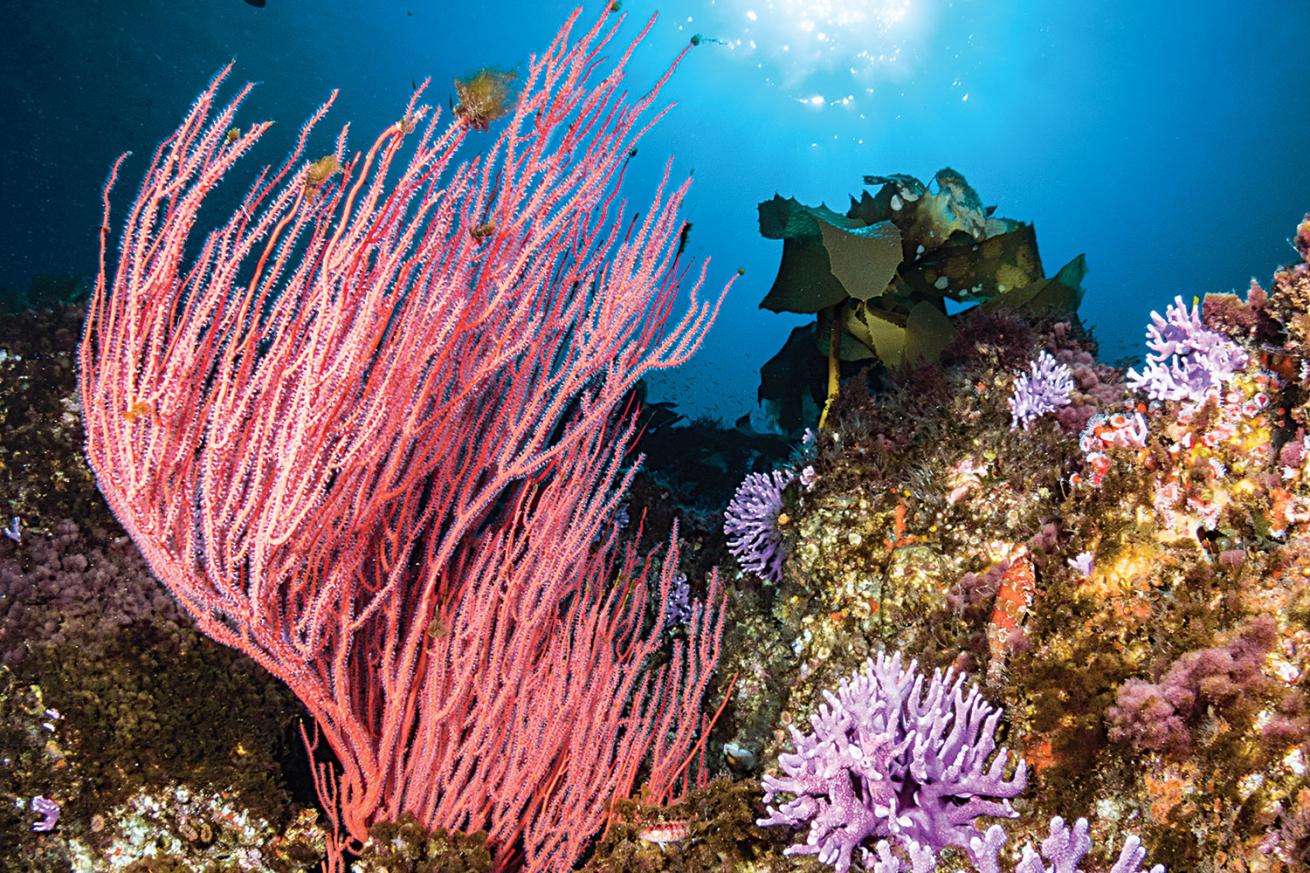
Brent DurandEffective composition helps the gorgonian and hydrocoral stand out in this shot from California’s Catalina Island.
Composition is everything in photography: It’s the difference between a snapshot and a captivating image. A good wide-angle composition will catch the viewer’s attention and slowly lead his or her eye around the frame.
Close-focus wide-angle — CFWA for short — is a composition technique that requires holding the camera very close to the subject, making it appear larger and with more emphasis in the frame. This subject is the anchor of the image — the most compelling foreground element that initially engages the viewer. When combined with an interesting mid-ground and background — a school of fish, perhaps — the result is an interesting image with depth. Keep the following tips in mind to create stunning shots.
CLOSE-FOCUS WIDE-ANGLE TIPS
Locate composition-friendly areas of the reef. The best locations are ledges and the tops of reef structures where you can easily hover with your camera and see not only the subject but also a middle and even background area. Find a compelling subject. Ideally this subject is recognizable, with interesting texture, pattern and shape. Stay away from dark colors that won’t have pop.
Use a small aperture (a high F-stop number). This creates more depth of field, which is required since the subject is so close to the camera port. If you’re shooting in manual, you will likely need to increase ISO and lower shutter speed slightly to account for the loss of light.
Bring your strobes or lights in close to your housing port. If the strobes are too wide, the light will miss the center of the frame where the subject is located. If you are using a single light source, this should be placed above the housing port at 11 or 1 o’clock, to create a hint of shadow on the front of the subject.
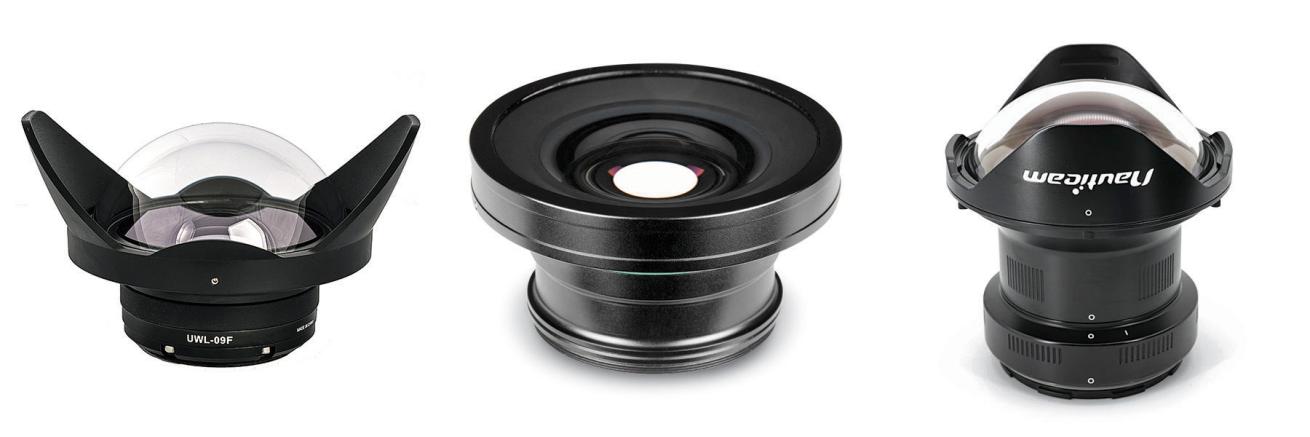
(Left to right) Nauticam; Ikelite; Fantasea
Nauticam N100 Wide-Angle Conversion Port Ikelite W-30 Wide-Angle Wet Lens Fantasea UWL-09F Wide-Angle Lens $3,950; Nauticam.com $475; Ikelite.com $800; Fantasea.com Advanced shooters will be interested in the versatility of this new wet lens. The N100 is designed to be used on a 28mm full-frame lens and replaces a traditional dome port. Initial reviews praise the sharp image quality. The W-30 expands your field of view while providing 0.59x magnification — perfect for shooting big reefscapes and wrecks. This wide-angle wet lens delivers a wide perspective and great image quality for 28mm lenses, and has zero minimum-focus distance — perfect for close-focus wide-angle.
(NOTE: These wet lenses attach to the outside of the housing and can be added and/or removed while underwater.)
Shoot at an upward angle. This results in a lighter-blue water color and a more energetic image.
EXPERT TIP: Don’t see a great background? Ask your dive buddy to swim into the composition and model for you. It helps if you’ve discussed dive-modeling signals prior to the dive.
CFWA compositions are challenging, but the rewards are immersive reefscapes.

